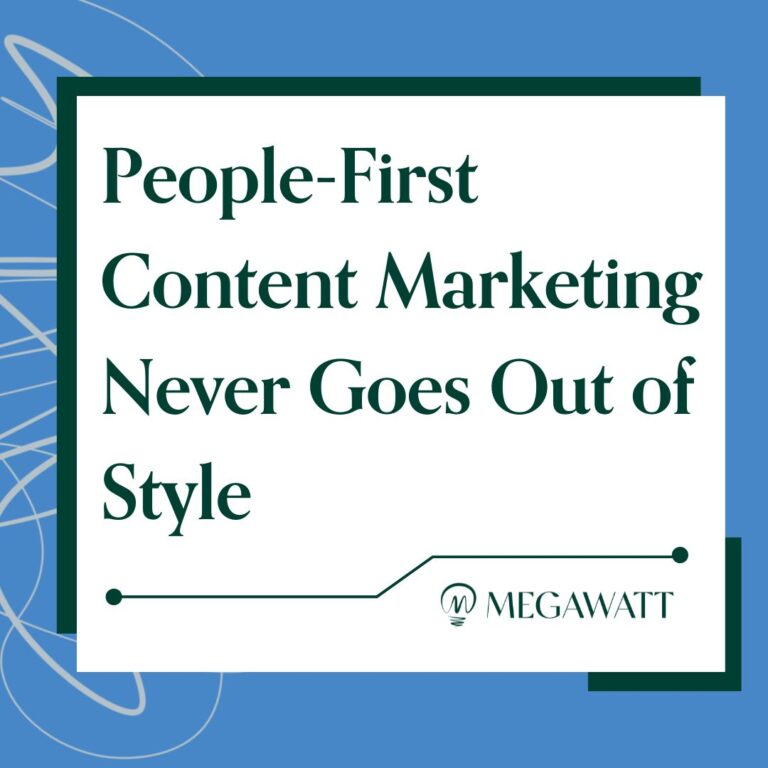We write many customer case studies for our B2B tech customers — and we love doing them! Case studies give us, as content marketers, a nuanced understanding of our customers’ customers and how they solve their pain points.
The end result ideally tells a story and gives our customers’ audiences the proof (and therefore the certainty) they need to invest in our customers’ products or services.
But the information we gather when interviewing customers and their customers doesn’t get tossed into a PDF and thrown on the website to gather dust. We use that understanding to add color to our customers’ content strategies.
This tactic is often called content repurposing or content atomization. Using it with your own B2B case studies will help you tell a consistent story throughout your marketing and get more mileage out of your content (and with significantly lower lift).
What are Customer Case Studies?
Before we dive into the goldmine that is customer case study repurposing, let’s first clarify what exactly a case study is.
Customer case studies can be seen as a long-form version of a testimonial — generally written by the company, not the customer.
- A testimonial is written by the client who says something like, “I love this product. It helped me fix this problem, and the customer service rocks, too! I highly recommend it.”
- A customer case study is written by the company and details their client’s challenge/problem(s), “before” state, “after” results, and the technologies and/or services used to solve the problem(s).
It’s a story that highlights your business’s skills and experience in solving a particular problem a reader prospect may also be having. When your audience reads a detailed report about how your company resolved someone else’s pain points, it can inspire them to explore your solution.
Take a look at this customer case study HubSpot wrote about their results with Rever:
Why Customer Case Studies are so Effective for Sales/Marketing
A Content Marketing Institute study showed that, for B2B marketers, case studies are the most effective content type for the end of the buyer’s journey (i.e., BOFU). But why?
Authors and screenwriters often use the phrase show, don’t tell. A customer case study does just that. It shows readers a tangible, real-world example of what your business’s product or service can do.
One sentence on your home page saying “We helped 5,000 businesses just like yours!” or even a customer saying, “I love this product!” is great. But a detailed story that dives into the “how” of a problem being solved IRL is even better.
When done right, a reader will walk away from a customer case study with a clear picture of the methods and tactics used to solve a customer’s challenge and, hopefully, feel inspired to buy your solution to solve their same challenges.
Why are case studies so effective specifically at the end of the buyer’s journey? Because they use storytelling to appeal to readers’ emotions — and emotion, not logic, is the main driver behind our decision-making.
Product pages, demos, and documentation can appeal to logic and offer your audience the evidence needed to guide them to the decision-making phase. But a story can allay hesitation and give them that emotional certainty they need to feel confident signing the contract.
Related Content: Three Categories of B2B Content and Where They Fit into the Marketing Funnel
11 Ways to Get More Bang for Your Case Study Buck
Now that we’re clear on what exactly a case study is and how effective it is for B2B marketing purposes, let’s take a look at eleven ways to get more mileage out of your customer case studies without much additional lift.
1) Share Customer Case Studies with Your Marketing and Sales Teams
You never know when your marketing and sales teams can use a case study to open up a conversation or generate interest with a prospect.
In fact, it’s a good idea to ensure that they have this plethora of data and customer stories on hand. Case studies can increase your success in closing deals by 70%.
There will always be a lead or two (or a dozen) that teeters on the fence. They’re looking for that final bit of evidence or that touch of emotional certainty that will help them make their decision.
For these folks, hearing about the detailed success of other decision-makers with similar problems can help them visualize how their lives and the lives of their team members might improve by investing in your product.
By giving the case study to your sales team, you help them create that sense of certainty for their prospect. A case study enables your sales team with the information they need to discuss the business results rather than the features of your product.
2) Use Your Customer Case Studies as a CTA in a Relevant Blog Post
The evidence above shows that case studies benefit lead generation and conversion. But to make either happen, you first must guide your readers to the case study. One way to do that is by getting new users to your site with a good SEO strategy.
But for those readers already lingering on your site looking for additional information, you have to give them a call to action.
A good call to action (CTA) placed in a blog or other content can:
- Guide the reader to a valuable gated asset (a case study in PDF form, for example) in exchange for their name and email address.
- Guide a reader to a non-gated asset where they might be given another CTA to sign up for a demo after reading your case study.
The key here is, naturally, to use your case study as the CTA in a relevant blog post or other piece of content. So if your post is called 5 Questions to Help Focus Your Organic B2B Social Media Strategy, you could include a CTA that leads to a case study about how your content marketing company helped “Business X” improve their social media strategy, which resulted in an X% increase in engagement, X% increase in conversions, and X% boost in sales.
3) Make a Visual Version of Your Customer Case Study and Embed It
A traditional CTA isn’t the only way to guide people on your site to your case study. You can also get more visual. Take the highlights of your case study, turn it into an attractive mini-infographic, and start embedding it!
You can embed your mini case study in relevant:
- website pages
- blog posts about the same topic
- long-form content (like e-books and white papers)
- email newsletters
4) Make a Slide Version of Your Customer Case Study
Remember that stat we shared earlier? Case studies can increase your success in closing deals by 70%.
That only works if your sales or biz dev team has access to your case studies. And while your sales team could easily point prospects to the existing case study, they should also be able to weave the case study into their current sales processes.
Why not help them out? Turn your case study into slides that sales and biz dev teams can quickly slip into any decks they are working on.
For example, Etsy used LinkedIn’s Slideshare to present its case study in an easily consumable format:
5) Put the Best Case Study in Your Email Signature with a Link
While your marketing team may not communicate directly with customers, your sales team definitely does! Encourage your sales team (and any other person who regularly communicates with potential customers) to add a case study to their signature for an added touchpoint in the funnel.
Here’s how to do this in Gmail:
- Turn an image from your case study — the front cover with the title and result is perfect — into a JPEG.
- In Gmail, go to Settings then scroll down to Signature.
- Upload your case study image into your email signature.
- Click on the image to highlight it, then click on the “insert link” icon:
- Add the URL from the case study, then hit “Save Changes” at the bottom of the Settings page.
6) Pull Out Quotes and Use Them Across Your Website
If you’ve written a good case study, you should have plenty of quotable material. To make the most of these quotes, consider using them in blog posts or web pages and linking to the case study.
Alternatively, your team can pull a couple of the best lines from the case study, create simple but catchy quote cards, and distribute them on your website, your social media channels, and your email newsletters — anywhere that’s relevant.
7) Embed Your Case Studies Behind Customer Logos on Your Site
If you’ve done a case study about one of your customers that has given you consent to share their name, embed the study in their logo on your website. Much like passive income, doing this can result in “passive discovery” where a site visitor clicks on the client logo to learn more about the client and — voila! — finds your informative case study about said client.
If you don’t have a “customers we’ve worked with” page, it’s time to create one or add a list to your homepage.
8) Build a Case Study Resource Page with Navigation
When you read reviews for a product, do you read just one and then move on? Probably not.
The same is likely true for potential customers reading your case study, so make it easy for your website visitors to find them. Create a resource page on your site that can act as a home base for all your case studies. If possible, build in the capability to sort by use case, industry, company size, products/solutions in use, etc. so users can find case studies that are hyper-relevant to them.
If you can, have a designer perform a little visual magic so that it’s not just a dry list of your case studies, but rather an attractive and appealing case studies page that people want to browse through.
9) Post About Your Case Studies on Social Media
The world of content marketing is always shifting, and one of the latest shifts is toward distribution. Farzad Rashidi, link-building expert and lead innovator at Respona, believes that content marketers should spend 4X more on distribution than content creation.
His reasoning? No matter how many CTAs you add or how many infographics you put in your blog post, your case study will never reach its full potential without an off-site distribution strategy.
So, let everyone know about it by sharing it on all your social channels. From sharing thought leadership posts from your exec team on LinkedIn to making quote cards with the best nuggets from the study to share on Twitter, there are plenty of ways you can drive more traffic to your case study using social media.
Related Content: 5 Questions to Help Focus Your Organic B2B Social Media Strategy
10) Write a News-Style Version
Social media isn’t the only place to distribute your case studies. Bylines and guest articles are a great way to get even more mileage.
For those blow-your-mind case studies with engaging quotes and impressive stats, repurposing them into feature-like articles can help you get extra reach and eyeballs.
We love this example from Proofpoint, which not only unfolds like a New York Times feature, but has really engaging graphics, too:
11) Record a Video Interview with a Customer
To write a case study, you’ll likely conduct at least one or two interviews. If one of your interviewees is especially articulate, engaging, and extra thrilled about your company, invite them to share their experience interview on video. This is a really easy way to get a customer case study that speaks (literally) to potential leads.
Once you’ve completed the video interview and shared it on your website or YouTube channel, break it into bite-sized pieces for social media sharing. Go one step further and add a customized thumbnail for the video clip that highlights the results,
Ready to Hire a B2B Content Marketing Agency?
Customer case studies are a great example of the ultimate social proof, but don’t stop there! Put these twelve tips for getting more use out of your customer stories into practice and watch your conversions grow. Struggling to get more mileage out of your case studies? We can help!






